Digital Minimalism: Why Reducing Screen Time Is Easier for Some Than Others
PhonesMonday, 02 September 2024 at 08:39
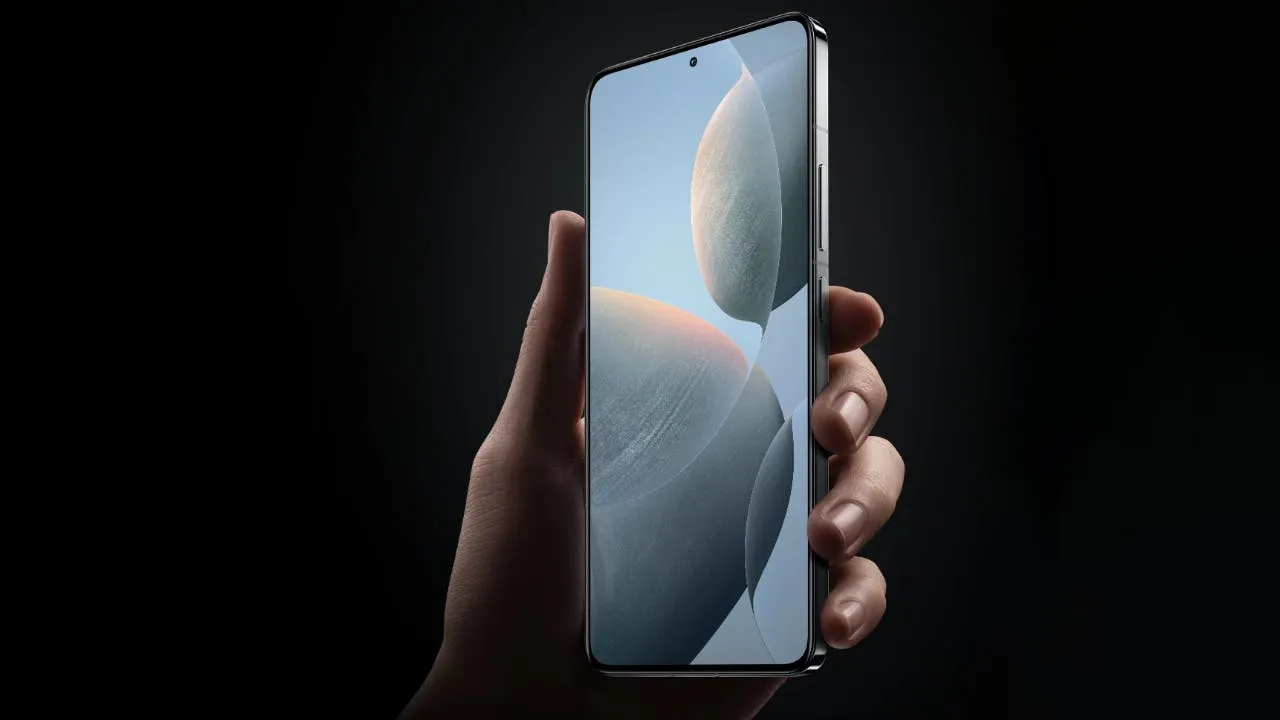
You may already know about the theory of improving mental health by lowering screen time. Author Cal Newport popularized it as "Digital Minimalism." At the core, it involves choosing how we interact with technology to cut its negative impact on our lives. The concept seems straightforward, but it can often be more complex.
To delve deeper into digital minimalism, ExpressVPN recently surveyed over 4,000 people across the US, the UK, France, and Germany. They explored the digital habits and attitudes of people from different generations. This research's findings led to some valuable insights. In this article, we’ll explore these insights further.
Generational Differences in Digital Minimalism

ExpressVPN’s survey on limiting tech for mental health revealed that different generations have varying levels of success and comfort. Take Gen Z, for example. This generation is making a conscious effort to reduce screen time. A significant part of it has successfully limited its usage. However, a considerable number still struggle to break free from its digital dependence.
Millennials face similar challenges. There is a mix of those who have managed to curb their screen time and those who find it difficult. Some Millennials are satisfied with their current digital habits, which is quite interesting. This suggests a diversity of approaches within this generation.
Gen X appears less focused on reducing screen time. A higher percentage feel comfortable with their current usage. Boomers, on the other hand, seem the most at ease with their digital habits. However, a smaller group actively limits their screen time.
How Many People Are Comfortable with Their Current Screen Time?
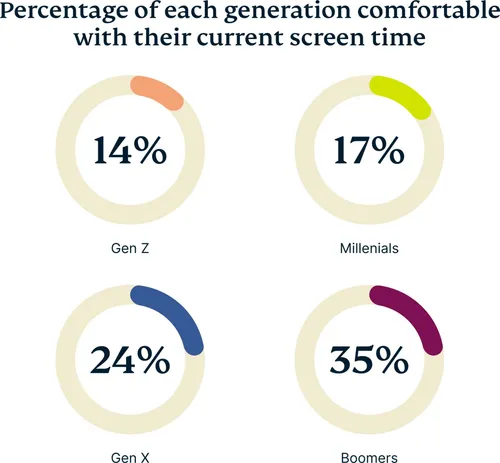
The valuable percentage breakdown shows people are relatively comfortable with their screen time.
The findings are as follows:
- Gen Z: 14%
- Millennials: 17%
- Gen X: 24%
- Boomers: 35%
Smartphones Appear to Be the Hardest to Limit
Phones emerge as the most challenging device to limit usage of. Over half of the respondents admitted struggling to reduce their screen time on their mobile, which highlights the pervasive role of smartphones in our daily lives. Televisions and laptops also presented significant challenges, reflecting their popularity and integration into our routines.
Percentage Breakdown on Which Devices Are Hardest to Put Down
- Phone: 61%
- TV: 23%
- Computer: 21%
- Tablet: 12%
- Gaming Console: 6%
- VR Headset: 1%
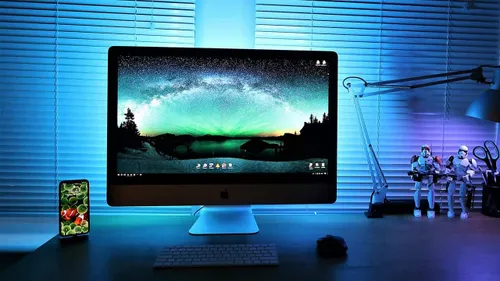
What's Making It Hard to Adopt a Digital Minimalism Lifestyle?
FOMO
One of the primary reasons people struggle to limit their screen time is the fear of missing out (FOMO). This anxiety-inducing feeling, particularly prevalent among younger generations, drives a constant need to stay connected. For Gen Z and Millennials, FOMO is a significant barrier. A large percentage admit it keeps them glued to their screens. The relentless stream of information and updates on social media creates a sense of urgency and a fear of missing out.
Motivation
Beyond FOMO, a lack of motivation can also hinder efforts to reduce screen time. Many individuals, especially younger generations, recognize the need for change but struggle to find the internal drive to disconnect. This issue is particularly prevalent among Gen Z and Millennials, who may struggle to break free from their digital comfort zones.
Work Requirements
The modern workplace often demands constant connectivity, making it difficult for many individuals to limit their screen time. This is particularly true for younger generations, who frequently cite work requirements as a barrier to digital minimalism. The blurred lines between professional and personal life can make it challenging to disconnect and unwind, contributing to a cycle of digital dependency.
Social Pressure
Social pressure plays a significant role in our digital habits. The desire to be responsive and engaged with others can make it challenging to disconnect. This pressure is felt across all generations. But it is particularly acute for Gen Z and Millennials, who are often more socially active and connected online.
How People Are Embracing Digital Minimalism?
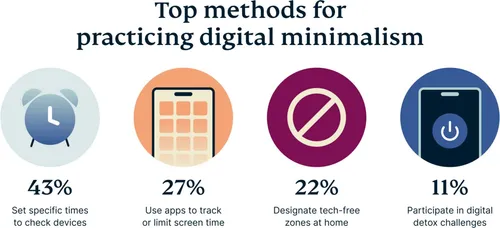
Strategies people are using to embrace digital minimalism in their daily lives:
Scheduled Device Checks
A common approach is to set specific times for checking devices. This allows for periods of uninterrupted focus and mental clearness.
Screen Time Tracking Apps
Many individuals use technology to combat technology overuse. For example, apps that track or limit screen time can be used.
Tech-Free Zones
You can create designated spaces where technology is off-limits. It helps foster relaxation and personal interaction.
Digital Detox Challenges
Participating in a structured duration of full disconnection is also helpful. It can be an effective way to reset your digital habits.
Other Tips to Reduce Screen Time
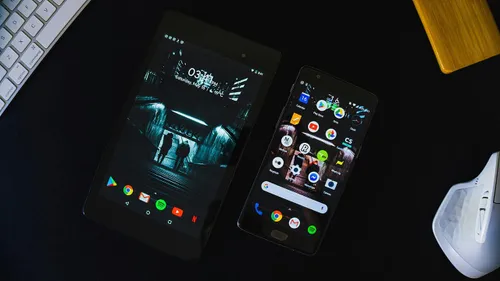
Besides the above-discussed strategies, you can use a handful of other tactics. They are:
Reflect On Your Habits
To maintain progress in digital minimalism, it's essential to reflect on your habits. Identify areas for improvement. Set aside time each month to check your digital usage. Also, consider ways to reduce screen time further.
Embrace JOMO
Instead of succumbing to the fear of missing out, embrace the joy of missing out (JOMO). Celebrate the moments you're offline. Also, appreciate the freedom from constant notifications and updates. Use this time to connect with yourself and others. This will foster meaningful relationships and enrich your life.
Take Care of Your Digital Diet
Consider your digital consumption as a diet. Select high-quality digital content that enriches your life as you choose nutritious foods. Unsubscribe from newsletters and unfollow social media accounts that waste your time. Instead, follow profiles and channels that inspire and educate you. This will improve the quality of your digital experience and reduce the time spent on mindless scrolling.
Conclusion
In conclusion, while the concept of digital minimalism offers a compelling framework for reducing screen time and improving mental well-being, its application varies significantly across generations. Factors such as generational differences, fear of missing out (FOMO), work requirements, and social pressures play critical roles in shaping our digital habits. Younger generations, particularly Gen Z and Millennials, often face more challenges due to a strong attachment to digital devices and a pervasive sense of digital connectivity. Meanwhile, older generations, like Boomers, tend to be more at ease with their screen time, reflecting a more established balance with technology.
Despite these challenges, there are various strategies available to foster a more mindful relationship with digital technology. From scheduled device checks to embracing the joy of missing out (JOMO), individuals can adopt practices that align with their needs and lifestyles. The journey towards digital minimalism is deeply personal and requires a conscious effort to break free from digital dependencies.
By reflecting on our digital habits and making deliberate choices about how we interact with technology, we can all take steps toward a healthier, more balanced digital life.
Loading




